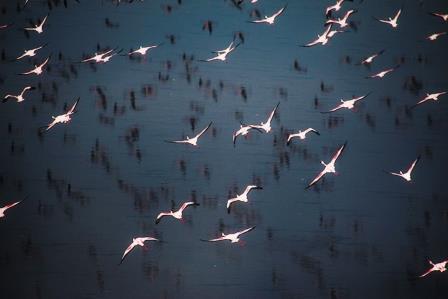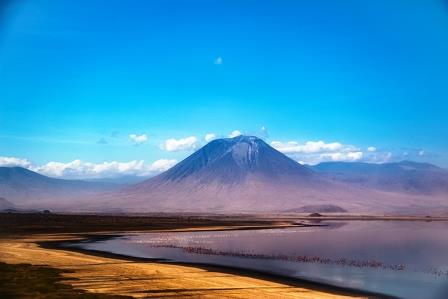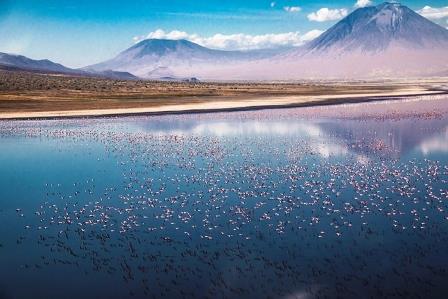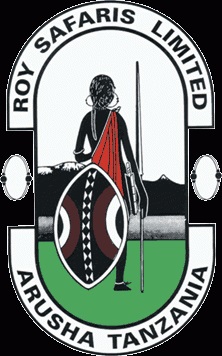Award-winning photos taken by a 13-year old have shone a spotlight on Lake Natron, the East African Rift Valley water feature famed for being inhospitable for most plants and animals except the Lesser Flamingo.
Anit Kumar, from India, won the Young Travel Photograher of the Year 14 and Under category for a series of images depicting the active ecosystem and live volcano, Ol Doinyo Lengai, next to it. Lake Natron’s water temperatures frequently rise above 40° C (sometimes even 60° C). The water in places is so alkaline that it can burn skin, making it a hostile place for most wildlife. The resilient Lesser Flamingo Phoeniconaias minor, however, especially favour this lake during the breeding season.
Anit’s photography reflected the scale of this natural phenonmena in his shots of the pink population who benefit from the high salinity and alkalinity of the water as it offers them a constant supply of Spirulina, cyanobacteria. Some 1.5 to 2.5 million birds are drawn annually to this food source which they filter from the mud with their specialised down-curved bills.
The hostile setting provides a perfect safe setting for breeding with strutting flamingos gathering each year to perform an intriguing dance-like movement with heads moving side-to-side. The birds pair up and nest peacefully in the middle of the shallow lake that deters their normal predators.

Chris Coe, Travel Photographer of the Year founder, explained the reason for making the award: “For such a young photographer and one who is still in his first year of photography, Ankit’s portfolio is remarkably accomplished. Photographed at Lake Natron in Tanzania, these images capture the scale and beauty of this place, giving us an insight into the relationship between this unusual environment and the flamingos which visit it.”
The flamingo population captured by Anit with such skill does, however, faces a real threat from soda mining activity. According to BirdLife, a global partnership of conservation organisations that strives to conserve birds, their habitats and global biodiversity, soda ash is mostly used to make glass, so building a large plant in the lake has been seen by some commercial interests as a great opportunity for investment. The organisation warn that soda ash facilities use large amounts of fresh water, which is so limited in the vicinity of the lake, and a lifeline for flamingos. Soda ash production would change the lake’s chemical composition, affecting the availability of food for millions of flamingos and their chicks. Mining and factory operations would also disturb nesting in this strategic location which has been free of predators for the birds.

Instead of damaging extractive activity BirdLife suggest far greater benefits for the area from developing the ecotourism potential for Lake Natron. The organisation makes a powerful argument for this option that would be ‘Good for people, the global community, and the economy of Tanzania itself.’ Without question this ornithological treasure is one of the world’s most impressive and intriguing natural wonders so a collective action approach to safeguarding the lake and creating sustainable livelihoods for those living around it should be welcomed by all.
Images courtesy of Travel Photographer of the Year











